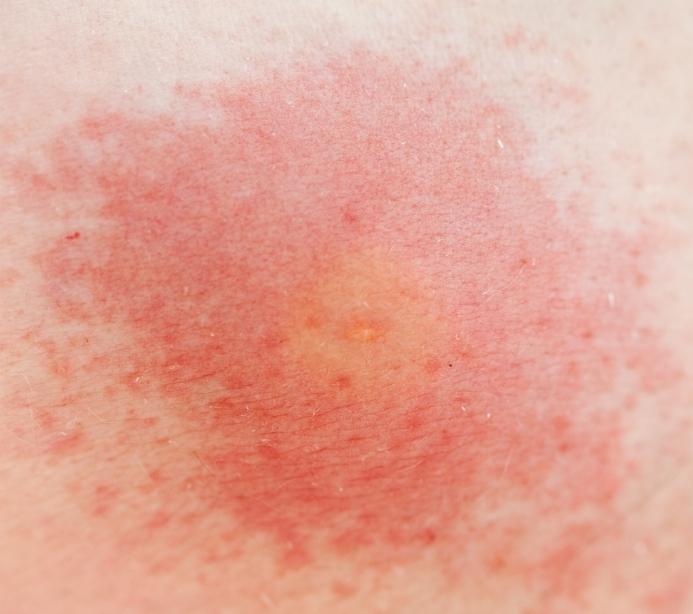Weeds That Cause Rashes

For many of us, spending time outdoors can be a source of joy and relaxation. However, it can also lead to unexpected encounters with certain plants that can cause discomfort and health issues. Among these, some common weeds are notorious for causing rashes and skin irritations. Understanding which weeds to avoid and how to protect yourself is crucial for enjoying the outdoors safely.
Introduction to Irritant Weeds
Several types of weeds contain chemicals or oils that can trigger allergic reactions or irritate the skin upon contact. These reactions can range from mild redness and itching to severe blistering and rashes. The most common culprits behind these reactions include poison ivy, poison oak, and poison sumac, but other lesser-known weeds can also cause significant discomfort.
Poison Ivy, Oak, and Sumac: The Usual Suspects
Poison ivy, oak, and sumac are well-known for their ability to cause severe skin irritations. These plants contain an oil called urushiol, which is responsible for the allergic reaction. The reaction typically starts within 12 to 48 hours after exposure and can last for weeks. It’s essential to recognize these plants to avoid them. Poison ivy has compound leaves with three leaflets, poison oak has leaves that resemble oak leaves, and poison sumac has white berries and leaves with 7-13 leaflets.
Strategies for Avoidance and Protection
- Wear Protective Clothing: When venturing into areas where these weeds are common, wear long sleeves, long pants, and closed shoes to minimize skin exposure.
- Use Barrier Creams: Applying creams or lotions that contain bentoquatum or encapsulated urushiol can provide a barrier against the oil.
- Wash Thoroughly: After potential exposure, wash your skin and clothing promptly with soap and water. Using dish soap or a cleanser specifically designed to remove urushiol can be effective.
- Remove or Avoid: If possible, remove these plants from your surroundings. However, avoid burning them, as the smoke can carry urushiol and cause severe reactions in the lungs.
Lesser-Known Irritants: Stinging Nettle and Wild Parsnip
Beyond the poison family, other weeds can also cause skin reactions. Stinging nettle, for example, has tiny hairs on its leaves and stems that inject histamine and other irritants into the skin, leading to burning, itching, and redness. Wild parsnip contains a chemical that can cause phytophotodermatitis, a condition where the skin becomes sensitive to sunlight, leading to severe blisters and long-lasting discoloration.
Prevention and Treatment
For these lesser-known irritants, prevention is key: - Be Aware: Learn to identify these plants to avoid accidental contact. - Protective Gear: Wearing gloves, long sleeves, and pants can protect against stings and contact. - Immediate Action: After exposure to stinging nettle, wash the area with soap and water. For wild parsnip exposure, avoid sun exposure for a couple of days and seek medical attention if blisters develop.
Natural Remedies and Treatments
While avoiding these weeds altogether is the best strategy, accidents can happen. For mild reactions, several natural remedies can offer relief: - Cool Compresses: Applying a cool, wet compress can reduce itching and ease discomfort. - Aloe Vera Gel: Known for its soothing properties, aloe vera can help calm the skin. - Oatmeal Baths: Oatmeal has anti-inflammatory properties and can be added to bath water for relief from itching and skin irritation. - Calamine Lotion: This is a traditional remedy for itching and can provide quick relief.
Advanced Treatments for Severe Reactions
For more severe reactions, especially those involving large areas of the body or facial swelling, medical attention is necessary. Over-the-counter hydrocortisone cream can reduce inflammation, and in severe cases, prescription medications like prednisone may be prescribed to reduce swelling and prevent infection. It’s also crucial to monitor for signs of infection, such as increased redness, swelling, or pus, and seek medical help if these occur.
Frequently Asked Questions
What should I do immediately after touching poison ivy?
+Wash the affected area with soap and water as soon as possible. Using a cleanser designed to remove urushiol oil can be particularly effective. Avoid touching your face or other parts of your body to prevent the spread of the oil.
Can I use natural remedies for severe reactions?
+While natural remedies like cool compresses and aloe vera gel can provide relief for mild reactions, severe reactions require medical attention. Over-the-counter creams and, in some cases, prescription medications are necessary to reduce inflammation and prevent infection.
How do I identify poison ivy, oak, and sumac?
+Poison ivy has compound leaves with three leaflets, poison oak has leaves that resemble oak leaves, and poison sumac has white berries and leaves with 7-13 leaflets. Remember the rhyme "leaves of three, let it be" to help identify poison ivy.
Can clothing protect me from these weeds?
+Yes, wearing protective clothing such as long sleeves, long pants, and closed shoes can significantly reduce the risk of skin exposure to irritant weeds. It's also important to wash clothing immediately after potential exposure.
What if I accidentally burn poison ivy and inhale the smoke?
+Inhaling smoke from burning poison ivy can cause a severe reaction inside the lungs. If this happens, seek medical attention immediately. In severe cases, it can lead to respiratory distress and may require hospitalization.
Conclusion
The outdoors offers countless opportunities for exploration and enjoyment, but it also presents challenges like encounters with weeds that can cause rashes and skin irritations. By understanding which plants to avoid, how to protect yourself, and what to do in case of exposure, you can minimize risks and maximize your outdoor experiences. Remember, some reactions can be severe and require immediate medical attention. Always prioritize your safety and well-being when venturing into nature.

